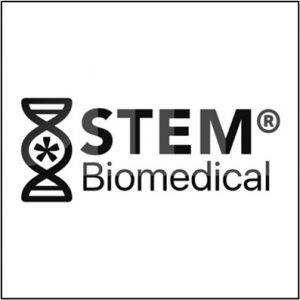“All truths are easy to understand once they are discovered, the point is to discover them” – Galileo Galilei. Research has fueled countless discoveries, and these discoveries have been applied to develop the innumerable technologies we rely on today. The importance of research can’t be stressed enough. This is especially true when it comes to human health. Life expectancy in North America has increased by approximately 10 years since the 1950s, and by approximately 30 years since the beginning of the 1900s.1,2 This is in large part due to medical advancements, made possible through extensive and meticulous research. Yet there are still a multitude of diseases which remain difficult to treat, or are altogether incurable.
 Our mission at STEM Biomedical is to advance biomedical research for the betterment of human health through interdisciplinary collaboration between the fields of science, technology, engineering, and mathematics (STEM). We are a Canadian non-profit founded in 2016, based in Kitchener-Waterloo. STEM Biomedical is comprised of a board of directors and a number of voluntary affiliates. Although we’re a relatively small group, we are dedicated to working towards a future with less human suffering caused by hard-to-treat or incurable diseases. We recognize this is a complex and ambitious goal, but we believe the cause makes it worth striving towards.
Our mission at STEM Biomedical is to advance biomedical research for the betterment of human health through interdisciplinary collaboration between the fields of science, technology, engineering, and mathematics (STEM). We are a Canadian non-profit founded in 2016, based in Kitchener-Waterloo. STEM Biomedical is comprised of a board of directors and a number of voluntary affiliates. Although we’re a relatively small group, we are dedicated to working towards a future with less human suffering caused by hard-to-treat or incurable diseases. We recognize this is a complex and ambitious goal, but we believe the cause makes it worth striving towards.
Our current research focus is on molecular simulations of biological systems. The human genome consists of over 20,000 genes, each encoding unique protein molecules.3 These unique biological molecules interact with one another in complex networks, serving as both structural and functional components of cells and cellular processes. Cells make up tissues and organs, which in turn make up our bodies. Within this context, spanning from genes to the human body as a whole, molecular interactions must occur in a highly organized manner and within specific boundaries in order to sustain life. When this finely-tuned complex network of molecular interactions is thrown off balance for any reason, problems occur at the cellular/tissue/organ levels and disease manifests. 
One way to better understand and characterize these molecular interactions is through computational simulation. Something we hope to accomplish is to accurately simulate large-scale molecular interactions of biological systems at an atomic resolution. This would provide tremendous acceleration in the discovery and development of novel therapeutics. However, this is much easier said than done, as biological systems involve highly intricate networks of numerous and diverse molecular interactions, as opposed to simpler interactions between a small number of molecules. There are layers upon layers of complexity involved in the development of such simulations. Moreover, a major limitation to-date has been the vast amount of computing power required for such simulations – although this is becoming less of a limitation as computing technology continues to advance. Despite the obstacles, we are optimistic in this endeavor.
 In May of 2021, STEM Biomedical organized a virtual run to raise funds for biomedical research and childhood cancer. Proceeds from the Run for Hope were shared equally between STEM Biomedical and Childhood Cancer Canada, a Toronto-based charity dedicated to improving the lives of children with cancer. The story behind the run was published by the University of Waterloo in an alumni impact article (University of Waterloo, 2021). Canadian Olympian Erin Teschuk and CFL football player Ronnie Pfeffer also joined the Run for Hope in support of the cause.
In May of 2021, STEM Biomedical organized a virtual run to raise funds for biomedical research and childhood cancer. Proceeds from the Run for Hope were shared equally between STEM Biomedical and Childhood Cancer Canada, a Toronto-based charity dedicated to improving the lives of children with cancer. The story behind the run was published by the University of Waterloo in an alumni impact article (University of Waterloo, 2021). Canadian Olympian Erin Teschuk and CFL football player Ronnie Pfeffer also joined the Run for Hope in support of the cause.
Notably, a number of Canadian businesses generously contributed through sponsorship. Among these are Farm Mutual Re, Linamar, Trudell Medical, Royal Distributing, FaithLife Financial, Heartland Farm Mutual, Tepperman’s, Sport Chek, The Underdog Dance Corp, Traces Screen Printing, Realhome Designs, and Neptune Auto Care. Despite the economic hardship of Covid-19, these businesses came together to make a positive impact.
Last but not least, the Run for Hope would not be possible without individuals from Kitchener-Waterloo and across Canada who participated in the run.
References